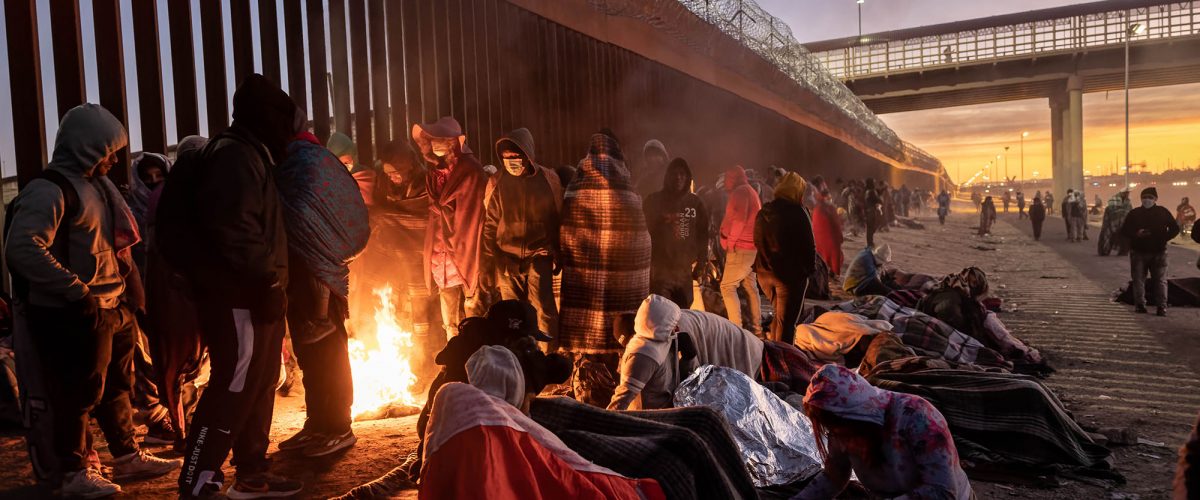In 2022, the U.S. Supreme Court ruled that the “Remain in Mexico” border policy could be reversed by the Biden administration, specifically through the Department of Homeland Security. This Trump-era policy had forced migrants to remain in Mexico while their cases and petitions for asylum were under review.
While rescinding this policy was a victory for asylum seekers, the potential for expulsion from the U.S. under Title 42 remains a great risk for them. Title 42 is part of the U.S. legal code that focuses on public health and safety and is currently being used, under the guise of emergency action, to turn away immigrants who may have “communicable diseases.”

Sean Powell
This legal policy was evoked by then-President Donald Trump in 2020, when the COVID-19 pandemic was raging, for the purported reason of stemming the spread of the virus. However, the policy seems to have greatly overreached. While the stated goal of Title 42 centered on protecting public health, in practice it has granted border patrol agents unchecked authority to force asylum seekers to turn back and leave the country without ever interviewing with an asylum officer.
Despite the U.S. legal process requiring an asylum seeker to speak with an asylum officer either at the border or upon entry, the ostensibly pandemic-based usage of Title 42 has allowed for two realities to be true at once: Legally, an asylum seeker (regardless of documentation status) is required to interview with an asylum officer. Additionally, the asylum seeker is susceptible to a quick expulsion by border patrol agents despite laws that dictate the agent is to affirmatively identify asylum seekers and connect them with asylum officers.
“The ostensibly pandemic-based usage of Title 42 has allowed for two realities to be true at once.”
This expulsion commonly happens before any asylum officer is made aware of the immigrant’s presence in the country.
The expulsion clause in Title 42 originally was intended to protect public health, specifically in terms of of immigrants who need to quarantine so as to prevent a public health crisis from arising or continuing. However, it speaks volumes that Title 42 has been used to justify more than 2 million expulsions (which took place without officials performing the various required screenings, including medical screenings) since the year 2020.
As a Christian, I recognize and understand the need for the church to be fully engaged in this issue, and it often saddens me that congregations are not assisting as they could. However, we do see some congregations assisting sojourning immigrants in very practical ways.
In recent years, some congregations have offered sanctuary for undocumented immigrants. For example, St. Andrew’s Presbyterian Church in Austin, Texas, has utilized legal protection as a “sensitive place” (meaning federal agents are not allowed to enter the premises for a deportation) to provide sanctuary for Hilda Ramirez and her son, Ivan. The church has walked with them through their journey of dealing with court rulings, interactions with ICE agents, finding employment and inching their way toward gaining citizenship.
There are other ways to help, too.
“Congregations can assist sojourners with sanctuary, housing, food and other forms of tangible assistance.”
Religious and theological declarations are helpful in pressuring and influencing policy makers and those with decision-making authority. Congregations can assist sojourners with sanctuary, housing, food and other forms of tangible assistance.
Possibilities for the church’s involvement can extend far beyond the immediate presence and help. For churches not located in proximity to the immigrant population, involvement can happen in the form of monetary support for organizations like Annunciation House in El Paso, where Christians are “accompanying the migrant, refugee, and the economically vulnerable people of the border.”
Support from a distance also could take the shape of supporting or joining the Interfaith Immigration Coalition, which is doing the important work of advocating for the reform of U.S. immigration policies from a faith-based perspective. This often comes in the form of peaceful protesting and letter writing campaigns. The group also provides resources such as faith-based blog posts, tool kits for local advocacy and conversation guides about immigration.
To actively do nothing would be to neglect various biblical exhortations and commands not to overlook or do wrong to the foreigner, but instead to care and provide for them. If God has taken the side of the sojourning immigrant, then the church would do well to follow suit.
Indeed, it is in the faces of these people that we might look upon the sojourning face of Christ Jesus, who can identify with this population as an infant refugee. In the spirit of holy generosity, what might it look like for you and your church community to offer a loving kindness to these neighbors?
Sean Powell is an intern at the Center for Church and Community Impact at Baylor University, He is pursuing a master of social work degree from the Diana Garland School of Social Work and a master of divinity degree from Truett Seminary.
Related articles:
Why most everything you think you know about global migration is probably wrong | Analysis by Mark Wingfield
You can minister to immigrant refugees on the U.S.-Mexico border


